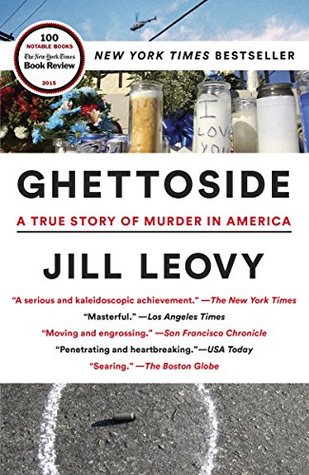More on this book
Community
Kindle Notes & Highlights
just 6 percent of the country’s population but nearly 40 percent of those murdered. People talked a lot about crime in America, but they tended to gloss over this aspect—that a plurality of those killed were not women, children, infants, elders, nor victims of workplace or school shootings. Rather, they were legions of America’s black men, many of them unemployed and criminally involved. They were murdered every day, in every city, their bodies stacking up by the thousands, year after year.
So to assert that black Americans suffer from too little application of the law, not too much, seems at odds with common perception. But the perceived harshness of American criminal justice and its fundamental weakness are in reality two sides of a coin, the former a kind of poor compensation for the latter. Like the schoolyard bully, our criminal justice system harasses people on small pretexts but is exposed as a coward before murder. It hauls masses of black men through its machinery but fails to protect them from bodily injury and death. It is at once oppressive and inadequate.
In the 1920s, a scholar concluded that black death rates from homicide nationwide were about seven times white rates. In the 1930s, Southern observers also noticed startling rates of black violence, and in the 1940s, a Philadelphia study found that black men died from homicide at twelve times the white rate. When the U.S. government began publishing data specific to blacks in 1950, it revealed that same gap nationwide. The black homicide death rate remained as much as ten times higher than the white rate in 1960 and 1970, and has been five to seven times higher for most of the past thirty
...more
In 1993, black men in their early twenties in Los Angeles County died by homicide at a rate of 368 per 100,000 population, similar to the per capita rate of death for U.S. soldiers deployed to Iraq in the aftermath of the 2003 invasion.
Eighteenth-century rates among settlers on the wild edge of the American colonies were almost exactly those of South Central blacks in the twenty-first century. In the town of Tira, Israel, today, Arab citizens of Israel also suffer a homicide rate similar to that of black South Central. They blame the Israeli police in terms that would sound familiar to John Skaggs: “As long as it’s Arabs killing Arabs, they just don’t care,” one resident said.
Police could be astonishingly parsimonious and presumptuous even with upstanding and fully cooperative witnesses. It was assumed that poor people could move at a moment’s notice, that their ties to whatever place they called home were not equal to those of wealthier suburbanites. Some cops, steeped in right-wing rhetoric about the “nanny state,” harbored deep philosophical objections to aiding witnesses with cash. One detective supervisor in Southeast during Skaggs’s term said that she saw it as her duty to make sure they got as little state money as possible. She considered the division’s
...more
Without law, people use violence collectively to settle scores and right wrongs, and commonly refer to violence as their own law. Wherever law is absent or undeveloped—wherever it is shabby, ineffective, or disputed—some form of self-policing or communal justice usually emerges.
Despite their relative poverty, recent immigrants tend to have lower homicide rates than resident Hispanics and their descendants born in the United States. This is because homicide flares among people who are trapped and economically interdependent, not among people who are highly mobile.
Black people couldn’t outrun segregation if they tried. It followed them, reinforced by invisible dynamics, like real estate steering. In the year 2000, decades after the courts struck down restrictive covenants, black people in Los Angeles were no more likely to have white neighbors than they had been in 1970.
Take a bunch of teenage boys from the whitest, safest suburb in America and plunk them down in a place where their friends are murdered and they are constantly attacked and threatened. Signal that no one cares, and fail to solve murders. Limit their options for escape. Then see what happens.
Stuntz died in 2011. His summation still applies: “Poor black neighborhoods see too little of the kinds of policing and criminal punishment that do the most good, and too much of the kinds that do the most harm.”


